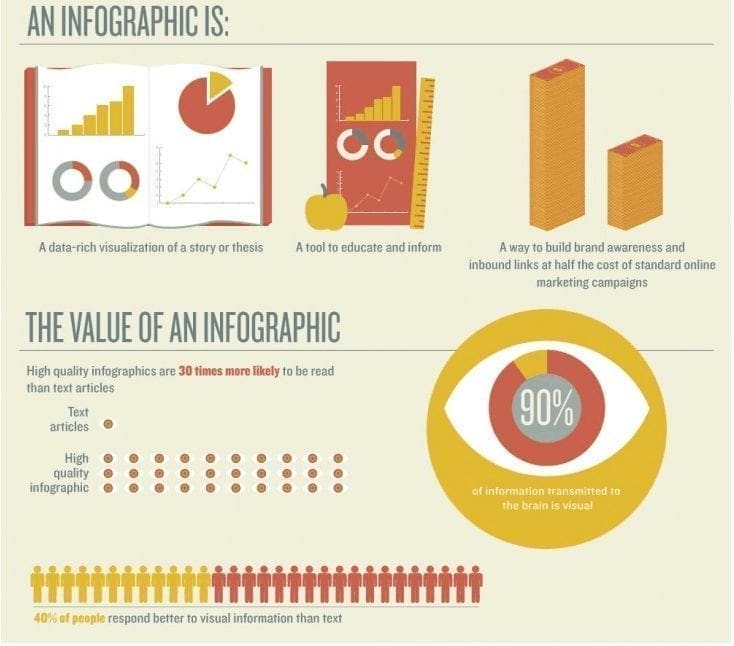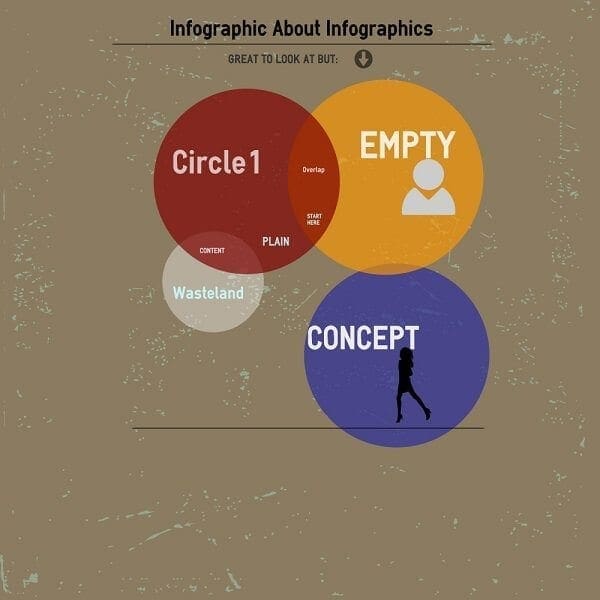Editors Note: Our post on how to build powerful backlinks was originally posted in May 2017 where we discussed link building and touched upon the effectiveness of visual content such as infographics and video when it comes to SEO. This is such an important topic that we wanted to expand on the original post and bring it up-to-date with a fresh take in 2019.
The recent evolution of infographics (video content)
- 1 The recent evolution of infographics (video content)
- 2 Does this mean traditional infographics are dead?
- 3 What are the implications for SEO and building backlinks?
- 4 New to infographics? Start here…
- 5 — 2017 article ‘How to Build Powerful Backlinks Using Infographic & Video Content Marketing’ —
- 6 Why Infographic Link Building & Video Backlinks Are so Powerful
- 7 A Step-by-Step Guide to Infographic and Video Content Marketing
- 8 Contact Opace
Infographics (data based graphics) have been around for some time and have the ability to engage an audience by using an appealing visual aesthetic, and additionally by providing interesting and informative information in bite-sized easy to digest chunks.
Due to the fact that the data presented in this way holds attention of the viewer for longer, we are starting to see more infographic style content not only in static images, but in animation format via video.
YouTube channels such as Kurzgesagt – In a Nutshell have recently found huge success by incorporating this informative and aesthetically pleasing content style into their videos. Most of their videos explore hypothetical questions and scientific hypotheses but the videos are able to make something very complex easy to follow for those that are new to the subject matter. This illustrates how effective having media rich media and visual content is by keeping the majority of the audience onboard, even though most won’t be from scientific backgrounds and would be otherwise easy to lose.
Most users won’t stick around when viewing lengthy amounts of plain text content, so be sure to try and appeal to as many senses as possible. Explaining the content seen on-screen via the use of creative descriptions and analogy (for example) is a good way to keep users that are just listening interested while at the same time displaying colourful yet informative content to others in a visually appealing way. Remember, some people absorb information more effectively by listening to content such as audiobooks or podcasts rather than watching something visually. Everyone has a different way to take in information, so it’s important to think about as many different means of communication as possible (written, visual, audio).
Does this mean traditional infographics are dead?
Not at all – ‘traditional’ infographics, the static image based kind that we’ve all seen before, still have their place. There are many occasions where standard infographics do a perfectly fine job in terms of illustrating data, such as the growth in popularity of a product or service amongst a certain demographic. Something beyond a nice visual presentation of the data isn’t always necessary.
If you want to really go into detail comparing many different pieces of data and keep your customers along for the ride, you may want to consider making your infographics more engaging using animation and audio, allowing them to be created as videos. As well as making your content more interesting, this has a powerful knock-on effect were SEO and building powerful backlinks is concerned.
What are the implications for SEO and building backlinks?
If presented well, this type of content has a high probability of going viral online due to the way this type of content can keep viewers / readers engaged. It has the potential to take what otherwise would be stale boring data and transforming it into something that people actually want to view and read due to the way that it is presented. You may ask how this is going to aid your SEO or backlink strategy, well the more engaging, useful and sharable your content is, the more likely that other websites will want to use your content and link back to your website. This is the best kind of backlink there is, as it’s totally free and natural. You’re not asking for a link or artificially trying to build backlinks, which can sometimes run the risk of a penalty.
In addition to this, you can take snippets of your in-depth infographic video and repurpose the content for other social networks and ‘drip feed’ bits of the content out, which means more content and more opportunities for social sharing. As with traditional link building, social sharing is a kind of ‘social link building’ where each share counts as a vote and is still technically a backlink which Google and other search engines can see.
Promotional campaigns
At some point in the future, you may be pushing a product promotion or service that is applicable to one specific part of your infographic video. Using the above approach, you can easily slice a slide from your video and post it to Instagram or Pinterest and have it stand separately as informative and engaging piece of content, perhaps with the added text informing your audience that this particular product or service is on sale.
In addition to this, you could cut part of the video and display it along with some relevant hashtags to Twitter.
Working in this way provides another great way of engaging your audience with micro bite-sized chunks of content, which in turn provides more opportunities for acquiring and building powerful backlinks.
New to infographics? Start here…
This may sound all well and good, but you may be wondering how exactly to create an infographic. The first part is getting a hold of your applicable data, this can be utilised in different ways depending on what your objective is, but commonly it’s used to show your audience typical usage benefits of your product or service, or how how much time and money can be saved, for example. We also see regional data, demographics and usage data, but of course, it depends on what your product or service is and what you’re trying to ‘shout’ about.
Now, in regards to tools, there are many available in 2019 that will get the job done without you needing to be a professional graphic designer. There is a long list of suggested tools over at Creativebloq that give you a brief rundown on which tools are best for displaying charts, geographic data and so on. Personally, I would recommend Google Charts just to get your feet wet and start to get an idea for how input data can be displayed in more appealing ways for your audience. Now you aren’t going to create the next amazing ‘Kurzgesagt’ video by using this – but it will set you down the right path and allow you to get your hands dirty without spending anything. Give it a shot, there’s nothing to lose! Then if you really want to go all out, you can hire an infographic designer to get a professional infographic created.
If you are struggling to think of what you can input into your infographic, chances are that you’re overthinking it. There are many different types of data that can be displayed via infographics rather than the current boring way of displaying information using text or bullet points. If you worked in recruitment for example, you could easily create a fun and informative infographic to attract new staff to an available position – it’s a great way to experiment and what a great way of showing you’re a company that doesn’t mind thinking ‘outside the box’ and trying something new by displaying statistical data about your businesses perks and positive aspects. Display anything, how much your company recycles each year, how many tons of Co2 you’re reducing via your companies greener alternatives, etc. It can be anything and if you’re doing something positive then its worth shouting about. Use it as an excuse to get stuck in and create visually appealing infographics that you can later on advance and improve at.
Obviously, we aren’t saying you should put all of your promotional material out in the form of infographics or infographic video, but it’s a more modern way of marketing your product that you might not be familiar with. It should be used as just another tool available to you at your disposal. When you have a lot of data to share that you think your audience would benefit from, give it a try – many people are surprised by the increase in engagement and social interaction across social networks since experimenting around with this type of content. Consequently, its certainly possible to build powerful backlinks due to your unique creation, especially if you’ve based the infographic around your industry where others in the same industry can share it as the data is applicable to them and their audience too. This also helps establish you and your business as an authority in your field, therefore increasing reputability and trust by placing you to be the ‘go-to’ source for leadership in your industry.

A example of an infographic from The Next Web
Image credit THENEXTWEB, the full infographic can be found HERE
Editors Note: This article was originally posted in May 2017. Since then, the approach to infographic link building and design in general has changes, so we wanted to provide a fresh take on the recent evolution of infographics and the newer ways that people are using them to engage audiences.
— 2017 article ‘How to Build Powerful Backlinks Using Infographic & Video Content Marketing’ —
We all know that building backlinks is critical for an effective SEO campaign and the more powerful the backlink, the more successful the outcome. So, how can you improve your chances by using infographic and video content marketing techniques?
Why Infographic Link Building & Video Backlinks Are so Powerful
Humans are predisposed to interpret images much faster than text and content that is solely text based is far less likely to perform well in the engagement stakes than anything visual. Facebook stats reveal that posts with images receive 2.3 times more engagement than those without. On Twitter, tweets with an image are 1.5 more likely to be retweeted.
We’re a curious species and infographics specifically, engage readers 3 times more than any other source of post on social media.

Infographics are over three times more likely to get a share than any other post. Image via Flickr.
With video, the figures get more attractive with 4 times more users preferring to watch a video about a product or service than reading about it. Clearly, infographic link building and video link building has a huge potential to reach an organic audience and improve your SEO. So, how can you effectively do this?
Well, if you are lucky, you can create content and share it via your blog, blogger outreach or social media channels to reach a wide audience but making the most of these potentially valuable sources of backlinks requires a little more investment.
A Step-by-Step Guide to Infographic and Video Content Marketing
Here, we give you a step-by-step guide to infographic and video link building:
1. Do your Research
As with all successful SEO link building strategies, the key to an effective one is in the planning. Find similar sources of infographics and video content to the one you are planning and run a backlink analysis on the URL using a backlink checker tool. Identify those sites that have a good domain authority and create a contacts list of these as potential sources. Tools like Majestic can check trust flow as well as backlink quality. For infographics, don’t forget to include popular image sharing sites, such as those below:
Consider which social media channels would be most appropriate to share your content and don’t forget to research popular Q&A sites like https://www.quora.com, https://www.reddit.com and http://www.answerbag.com to see whether your content would be beneficial to an existing question or thread. This is often a great way to obtain great quality backlinks and traffic.
2. Ride the Waves
If your infographic has any link to a trending topic or current affairs/news item, then you stand a good chance of being able to capitalise on this trend. Use Google’s ‘News’ search tool to find relevant topics associated with your content. If you need to tweak your content at this stage to provide a better ‘angle’ then do so before publishing.
3. Build a Network of Experts
You can use social media outlets like Twitter to find relevant experts and influencers in your niche field. If your content is likely to be topical then you could also include journalists. Use keyword search tools on sites like LinkedIn, Twitter or Facebook to find top accounts, posts and commenters to add to your distribution network.

Build a network of experts to help your outreach and maximise your link building opportunities. Image via Flickr.
4. Do the Outreach
Now that you’ve built up a highly targeted list of websites and individuals, you can send personalised requests for backlinks to your infographic or video. If you’ve done your research well and created useful infographics or video content that is both relevant and informative, then the quality of your resource should do the rest.
Contact Opace
You shouldn’t underestimate the power of infographic and video link building to create fast organic growth with authoritative links. Here at Opace, we know just how to maximise this potential. Contact us online or call our SEO team today on 0121 468 0600 to discuss your infographic link building and video marketing strategy.






You’re right when you say you should let the quality of your content advocate for itself in your search for backlinks. High quality, informative content should also be widely applicable, though, to cover your bases for possible uses by other users.
Thanks for sharing useful information.